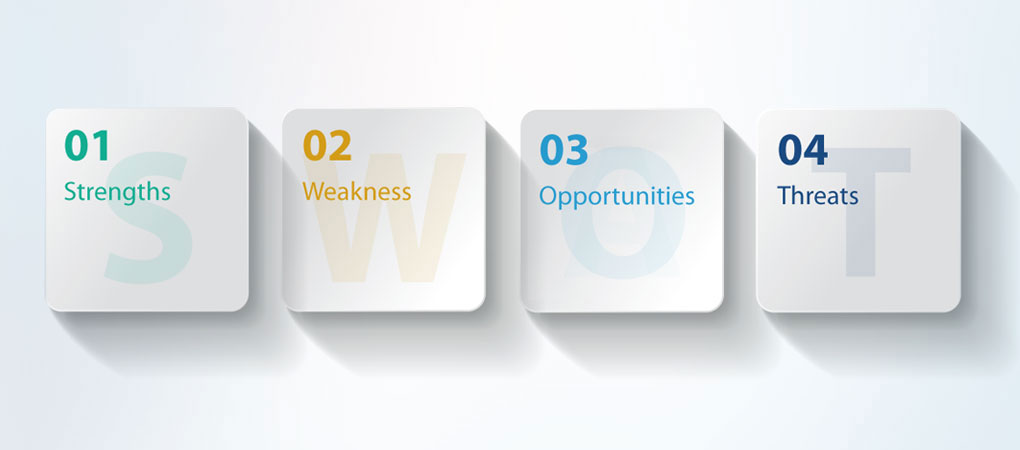You’ve probably heard of a SWOT Analysis. It’s used throughout business not just in marketing. It’s a simple 2×2 matrix that helps crystallize thoughts and prepare action plans. I feel it’s particularly useful for measuring up against a competitor, especially when a business is looking to grow.
The four sections of a SWOT are strengths, weaknesses, opportunities and threats. The first two analyse the internal business environment, the final two analyse the external environment.
It’s important to carry out a SWOT knowing the external environment. So good marketing intelligence is vital to ensure you get the most out of the process. It’s also important to carry out a SWOT from the customer’s perspective of the internal environment. It’s no good listing (what you perceive as) a strength when actually your customers have higher expectations then you thought.
It’s also important not to do a SWOT in isolation. Better to do the analysis as a team. Everyone may have different ideas on the strengths, weaknesses, opportunities and threats the business faces. Similarly, once written down, not everyone will interpret the words in the same way. Getting shared understanding of the issues will significantly help taking the SWOT forward into an action plan.
That’s also the key. Once you’ve carried out a SWOT analysis you need to do something with the results. Don’t be too ambitious. It’s better to deal with three or four key issues. It may also be helpful to carry out different SWOTs to analyse different competitors and different markets. That way you’ll be able to tackle the issues in bite sized chunks.
Ultimately, you will be looking to convert threats to opportunities, weaknesses to strengths and to match strengths to opportunities.



